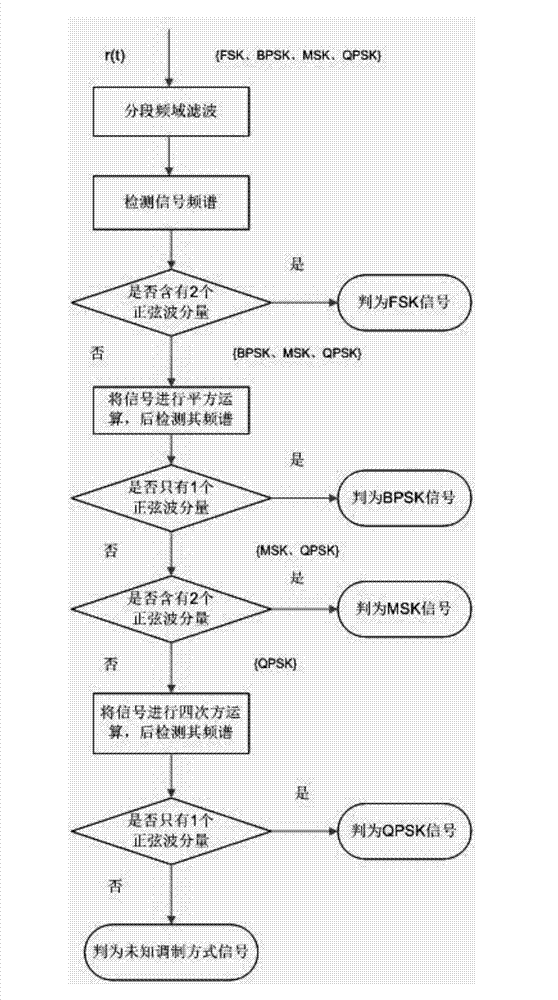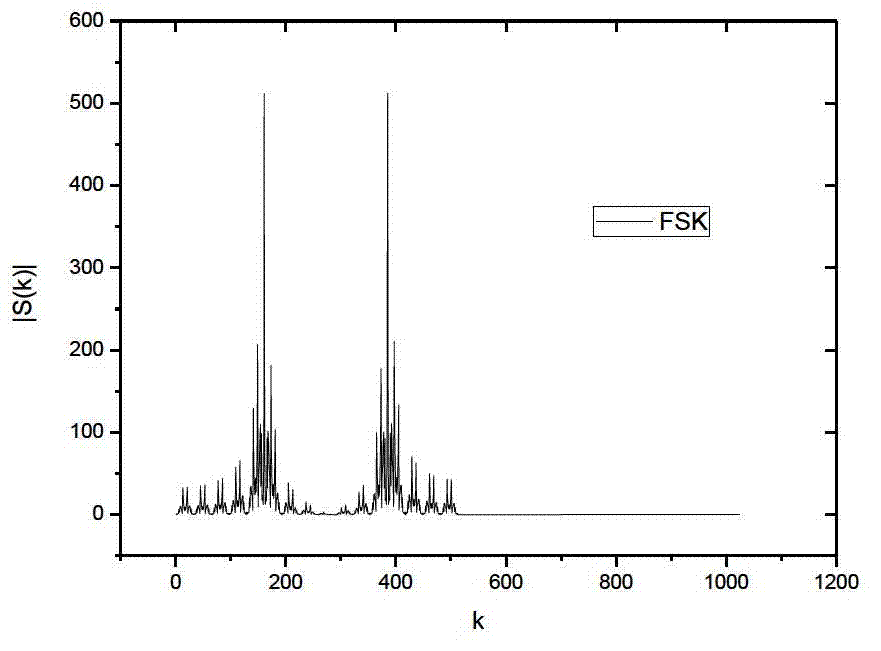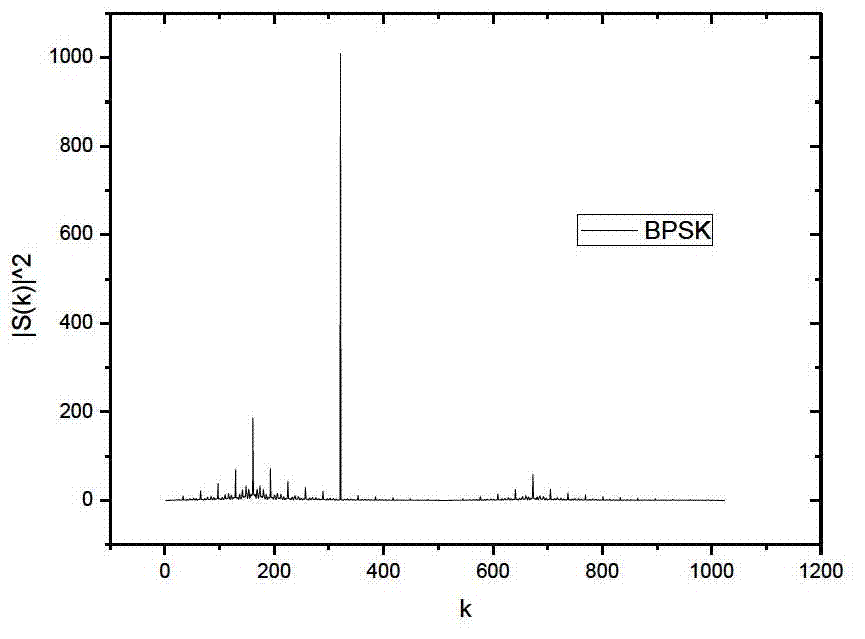Recognition method for cognizing radio signal modulation modes under low-signal-to-noise-ratio condition
A cognitive radio and signal modulation technology, applied in the field of communication, can solve problems such as fuzzy algorithm description, high signal-to-noise ratio requirements, complex calculations, etc., and achieve the effect of improving the impact
- Summary
- Abstract
- Description
- Claims
- Application Information
AI Technical Summary
Problems solved by technology
Method used
Image
Examples
Embodiment Construction
[0026] The specific implementation method will be further described below in conjunction with the accompanying drawings.
[0027] Such as figure 1 Shown, method of the present invention comprises the following steps:
[0028] (1) Perform segmented frequency domain filtering on the received signal:
[0029] (1.1) Segment the original signal. For FSK, BPSK, MSK or QPSK signals, in a short time interval (t 0 ,t 0 +T 0 ), the approximation can be regarded as a sine wave signal, and the model after segmental processing is
[0030] x i (t)=Aexp[j(2πf i t+θ i )]+w i (t), iT 0 ≤t≤(i+1)T 0
[0031] Among them, A, f i ,θ i , T 0 Respectively, the envelope function, carrier frequency, initial phase and pulse width of the signal; w i (t) is a zero-mean stationary complex white Gaussian noise with independent real and imaginary parts, and the variance is σ 2 , and its discrete sampling is
[0032] x i (n)=Aexp[j(2πf i nΔt+θ i )]+w i (n), i(N 0 -1)≤n≤(i+1)(N 0 -1)
...
PUM
 Login to View More
Login to View More Abstract
Description
Claims
Application Information
 Login to View More
Login to View More - R&D
- Intellectual Property
- Life Sciences
- Materials
- Tech Scout
- Unparalleled Data Quality
- Higher Quality Content
- 60% Fewer Hallucinations
Browse by: Latest US Patents, China's latest patents, Technical Efficacy Thesaurus, Application Domain, Technology Topic, Popular Technical Reports.
© 2025 PatSnap. All rights reserved.Legal|Privacy policy|Modern Slavery Act Transparency Statement|Sitemap|About US| Contact US: help@patsnap.com



